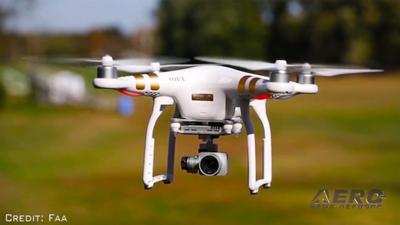Says Changes From Existing Laws Are Needed To Protect Privacy
A group of lawyers will meet in Detroit in the near future, and one of the items on their agenda could radically alter the way drones are regulated in the United States.

The group is called the Uniform Law Commission. It is made up of attorneys appointed by state governments to craft model legislation for consideration by state legislatures across the country. They are currently working on a draft "Tort Law Relating to Drones Act" they claim will protect privacy, but does not take the FAA's jurisdiction over airspace into consideration, according to a report from Techcrunch.
In their draft, the ULC cites U.S. v. Causby, in which the Supreme Court said in 1946 that "if the landowner is to have full enjoyment of the land, he must have exclusive control of the immediate reaches of the enveloping atmosphere. Otherwise buildings could not be erected, trees could not be planted, and even fences could not be run. The principle is recognized when the law gives a remedy in case overhanging structures are erected on adjoining land. The landowner owns at least as much of the space above the ground as the can occupy or use in connection with the land."
“[w]hile the owner does not in any physical manner occupy that stratum of airspace or make use of it in the conventional sense, he does use it in somewhat the same sense that space left between buildings for the purpose of light and air is used. The superadjacent airspace at this low altitude is so close to the land that continuous invasions of it affect the use of the surface of the land itself. We think that the landowner, as an incident to his ownership, has a claim to it and that invasions of it are in the same category as invasions of the surface.”
But the ULC said that the Supreme Court left largely unresolved a what constitutes the "immediate reaches" or "superadjacent airspace".

The proposed model legislation would make any drone flying lower than 200 feet above the ground or "improvement built upon the surface of the land" guilty of "aerial trespass". They say that the rule "primarily protects property interests, a right of quiet solitude, and a right to be left alone."
The ULC says that "The altitude limit of 200 feet was selected by the Drafting Committee because the FAA has historically not been concerned with most obstacles and other structures below 200 feet (except near airports), whereas obstacles extending above that altitude have typically appeared on FAA navigational charts and have required safety lighting. Also, in 2017, the White House issued an Executive Order specifying that state, local and tribal officials, operating under the auspices of the Drone Integration Pilot Program could make reasonable time, manner, and place restrictions regarding the use of unmanned aircraft. That executive order mirrored the language of bipartisan legislation introduced in the House and Senate in 2017 and re-introduced as a codification of the Pilot Program in the FAA Reauthorization Bill introduced in the House in 2018.
"In May of 2018, ten state, local and tribal entities were selected by the U.S. Department of Transportation to participate in advanced unmanned aircraft operations, part of the selection criteria used by the federal government was an assessment of the willingness of these entities to craft reasonable time, manner, and place restrictions below 200 feet (and above that when a case could be made for such restrictions). Practical reasons for selecting this altitude include the fact that at least three states have adopted altitude limits higher than that adopted in this Act, including one state (Nevada) where a leading drone package delivery company testified in support of legislation that featured a 250 foot altitude limitation."
In its analysis, Techcrunch says that the ULC has largely dismissed concerns expressed by the U.S. DOT, the FAA and the drone industry. They assert that the proposal is incorrect in saying that the DOT and FAA are supportive when there are on-the-record letters opposing the efforts.
The dates for the ULC meeting in Detroit were not disclosed.
(Images from file)
 Airborne 04.16.24: RV Update, Affordable Flying Expo, Diamond Lil
Airborne 04.16.24: RV Update, Affordable Flying Expo, Diamond Lil ANN's Daily Aero-Term (04.20.24): Light Gun
ANN's Daily Aero-Term (04.20.24): Light Gun Aero-News: Quote of the Day (04.20.24)
Aero-News: Quote of the Day (04.20.24) Aero-News: Quote of the Day (04.21.24)
Aero-News: Quote of the Day (04.21.24) ANN's Daily Aero-Term (04.21.24): Aircraft Conflict
ANN's Daily Aero-Term (04.21.24): Aircraft Conflict




